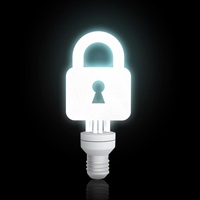- Smart Metering Technologies
- Utility Transformations
- Utility Transformations
- Home Energy Management
- Cybersecurity
Cybersecurity Threats Mount, but Overall Picture Not So Bleak

Cybersecurity threats keep mounting against the grid, corporations, and individuals. The known attacks and security holes revealed in the past year are real and cause for serious concern. The whole picture, however, might not be as bleak as it first appears if utilities focus on getting ahead of cybersecurity threats. The good guys are in this fight and they have solid tools to keep us safe. Among grid-related threats, at least three incidents stand out as examples of how grim the situation could become if utilities do not proactively address cyber attacks.
It was revealed in August that a foreign power had compromised the state-owned Irish power grid company EirGrid, according to a report by Ireland’s Independent newspaper. When the hack was first discovered, experts said the breach occurred more than 2 months beforehand. At the time, the newspaper’s sources said it was still unknown if any malicious software had made its way into EirGrid’s control systems. Though it is unclear which foreign power was involved, the hackers used Internet Protocol (IP) addresses sourced from Ghana and Bulgaria.
In July, US officials revealed that hackers had penetrated computer networks of companies operating nuclear power stations, other energy facilities, and manufacturing plants. Wolf Creek Nuclear Operating Corp.’s power plant near Burlington, Kansas is one of the nuclear facilities specifically named. The nefarious activity caused the US Department of Homeland Security and the US Federal Bureau of Investigation to issue an amber warning, which is the second-highest rating level. It turns out the hackers were unable to hop from victims’ computers into control systems, and officials said there was no sign of a threat to public safety.
In mid-October, millions of people found out that nearly all Wi-Fi devices were at risk of hijack and eavesdropping because of a bug known as KRACK that exposes a flaw in the common security protocol WPA2. If exploited, a hacker could use a skeleton key to access any WPA2 network without a password. Patches for thwarting the threat have been made available from some vendors, while others are still pending.
Grid Cybersecurity
So, how high are the overall risks? Potentially rather high, but perhaps not as high as one might think for the grid in particular. According to Philip Propes, chief security information officer for the Tennessee Valley Authority (TVA), the situation is not doom and gloom in the electric utility sector. During a recent webinar, he said officials in the utility industry are well aware of cybersecurity issues and many have taken appropriate steps. In TVA’s own case, he says his team is moving from a reactive approach to a proactive approach around security and getting ahead of attacks before an event occurs.
Furthermore, private experts and researchers at the US Department of Energy’s national labs are working on new methods to reduce the threat from cyber attacks. One project at Oak Ridge National Laboratory would set up a private communications and control system for the grid, called darknet, that would operate separately from the public internet. Also, the use of quantum encryption capabilities could add enhanced security for the grid.
Cybersecurity risks should not be taken lightly, but there is no reason to panic. There is a growing sense of urgency among experts and officials to collaborate on robust solutions and progress is being made quietly, despite the mounting threats. For a more in-depth look at how utilities are responding to these threats, check out Guidehouse Insights’ Cybersecurity for the Digital Utility report, written by my colleague Michael Kelly.